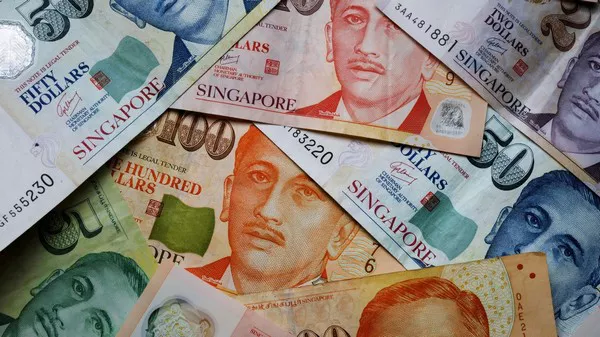The Singapore Dollar (SGD) is a stable and widely used currency in Southeast Asia. It has earned a reputation for its strength and reliability, making it an attractive choice for investors and businesses alike. One of the questions frequently asked about the SGD is whether it is pegged to the US Dollar (USD). In this article, we will explore the relationship between the Singapore Dollar and the US Dollar, examining the historical context, the Monetary Authority of Singapore’s (MAS) exchange rate policy, and the factors influencing the SGD’s value.
Understanding Exchange Rate Systems
Before delving into the specifics of the Singapore Dollar’s exchange rate regime, it’s crucial to understand the different exchange rate systems in use worldwide.
1. Fixed Exchange Rate
In a fixed exchange rate system, a country’s currency is directly pegged to another currency or a basket of currencies. The exchange rate remains constant, and the central bank intervenes in the foreign exchange market to maintain this fixed rate. This system is relatively rare today due to its inflexibility.
2. Floating Exchange Rate
A floating exchange rate system allows a currency’s value to fluctuate freely in the foreign exchange market. The exchange rate is determined by market forces such as supply and demand. Most major currencies, including the US Dollar and Euro, operate under this system.
3. Managed Float or Crawling Peg
A managed float, also known as a crawling peg, combines elements of both fixed and floating exchange rate systems. The central bank intervenes periodically to influence the exchange rate but allows it to adjust gradually based on market conditions.
The Historical Context of the Singapore Dollar
The history of the Singapore Dollar’s exchange rate regime is marked by a transition from a fixed to a managed float system.
1. The Fixed Exchange Rate Era
When Singapore gained independence in 1965, it continued to use the Malaysian Dollar as its currency. However, this arrangement proved unsustainable due to political differences between the two countries, leading to the issuance of the Singapore Dollar in 1967. Initially, the SGD was pegged to the British Pound (GBP) before being linked to the Malaysian Dollar again.
2. The Shift to a Managed Float
In 1973, Singapore shifted its exchange rate regime to a managed float system, also known as a crawling peg. The decision was prompted by the collapse of the Bretton Woods system and the subsequent devaluation of the US Dollar, which had been Singapore’s anchor currency. Under the new system, the Singapore Dollar was linked to a basket of currencies instead of a single one.
The Monetary Authority of Singapore’s Exchange Rate Policy
The Monetary Authority of Singapore (MAS) is the country’s central bank and is responsible for managing the SGD’s exchange rate. MAS employs a unique approach known as the “Singapore Dollar Nominal Effective Exchange Rate” (S$NEER) to guide its exchange rate policy.
1. The Singapore Dollar Nominal Effective Exchange Rate (S$NEER)
The S$NEER is a trade-weighted exchange rate index that measures the SGD’s value relative to a basket of currencies of Singapore’s major trading partners. The composition of this basket is not publicly disclosed but is periodically reviewed to ensure its relevance to Singapore’s trade patterns.
2. Targeted Band and Managed Float
MAS manages the SGD’s exchange rate by setting a policy band within which the S$NEER is allowed to fluctuate. This policy band is the central element of Singapore’s exchange rate policy. It is a practical approach that allows the SGD to adjust gradually in response to changing economic conditions while avoiding extreme volatility.
3. Interventions
MAS intervenes in the foreign exchange market when the S$NEER approaches the boundaries of the policy band. If the S$NEER strengthens too much or weakens significantly, MAS may buy or sell SGD to ensure that the exchange rate remains within the defined band.
Factors Influencing the SGD’s Value
Several factors influence the value of the Singapore Dollar within its managed float system:
1. Economic Fundamentals
Economic factors such as inflation, interest rates, and economic growth play a significant role in determining the SGD’s value. A strong Singaporean economy typically leads to a stronger SGD.
2. External Economic Conditions
Singapore is highly dependent on international trade. Changes in global economic conditions, such as trade tensions or economic downturns, can impact the SGD’s value by affecting the country’s export and import dynamics.
3. Monetary Policy
The Monetary Authority of Singapore adjusts its monetary policy to maintain price stability and support economic growth. Changes in interest rates and monetary policy can influence the SGD’s value.
4. Market Speculation
Currency markets are influenced by speculative trading. News, events, and market sentiment can lead to short-term fluctuations in the SGD’s value.
5. Exchange Rate Bands
MAS sets the upper and lower boundaries of the exchange rate band for the S$NEER. These bands act as a guide for investors and traders, affecting their behavior in the foreign exchange market.
Conclusion
The Singapore Dollar is not pegged to the US Dollar but operates under a managed float system with the Singapore Dollar Nominal Effective Exchange Rate (S$NEER) as its key reference point. This approach allows the SGD to adjust gradually in response to changing economic conditions, providing stability while allowing for flexibility.
The historical transition from a fixed exchange rate system to a managed float reflects Singapore’s adaptability in the face of evolving global economic dynamics. As one of the world’s strongest and most stable currencies, the Singapore Dollar’s exchange rate regime continues to serve the country well, supporting its economic growth and international trade.
Understanding the intricacies of the SGD’s exchange rate policy is essential for businesses, investors, and policymakers seeking to navigate the dynamic global currency landscape and capitalize on opportunities in Singapore’s thriving economy.


